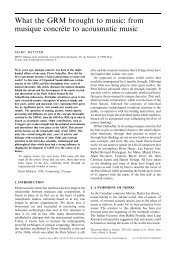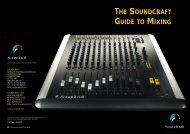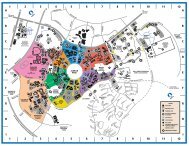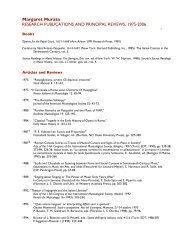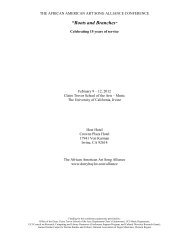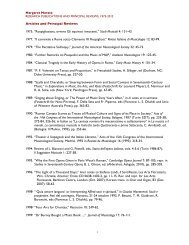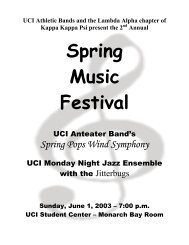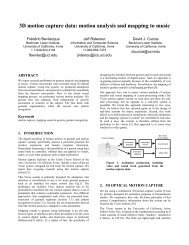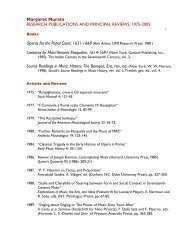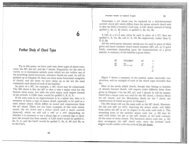Symphony June book.indd - Music - University of California, Irvine
Symphony June book.indd - Music - University of California, Irvine
Symphony June book.indd - Music - University of California, Irvine
You also want an ePaper? Increase the reach of your titles
YUMPU automatically turns print PDFs into web optimized ePapers that Google loves.
PROGRAM NOTES<br />
Overture to Oberon<br />
Carl Maria von Weber’s output as a musical dramatist, more specifically, as the pre-eminent<br />
developer <strong>of</strong> the “Romantic Opera” form, culminated in his final opera, Oberon, or the Elf<br />
King’s Oath, completed in 1826. Oberon is notable as the only opera set by Weber with a<br />
libretto in English. The utter failure <strong>of</strong> this opera is likely owing to both the uninspired and<br />
convoluted story line, as much as the composer’s unfamiliarity with the English language.<br />
Despite the disastrous fate <strong>of</strong> the opera itself, the overture is particularly inspired<br />
and holds delightful tunes and orchestration. The overture uses themes from the opera as<br />
well as ones from Weber’s 1886 incidental music to the tragedy Heinrich IV. The listener is<br />
treated to a delicate, even sentimental introduction dominated by musical dialogue between<br />
horns, woodwinds, and strings. The two exciting themes associated with this overture helps<br />
to portray Weber’s mastery <strong>of</strong> moods and scenery. The overture is scored for 2 flutes, 2<br />
oboes, 2 clarinets, 2 bassoons, 4 horns, 2 trumpets, 3 trombones, timpani, and strings.<br />
Concerto for Piano, Violin, Cello and Orchestra, Op. 61<br />
Soon after the completion <strong>of</strong> the Third <strong>Symphony</strong>, Eroica, Beethoven began composing a<br />
concerto for three solo instruments: piano, violin, and cello. This combination <strong>of</strong> instruments,<br />
the traditional Piano Trio, had been fully utilized by Beethoven, like the other chamber<br />
music masters <strong>of</strong> the period: Haydn and Mozart. Although other works had been written for<br />
multiple solo instruments with orchestral assistance, the Triple Concerto, composed in 1804,<br />
attempted to fuse the chamber trio into the fabric <strong>of</strong> the orchestra, in a concerto format.<br />
The work, like most concertos, is in the three-movement layout – Allegro, Largo,<br />
and Finale: Rondo alla Polacca - but <strong>of</strong>fers one significant difference between itself<br />
and most concertos. Beethoven chooses to forgo the traditional single-instrument solo<br />
improvisation (cadenza) in the first and last movements; instead, <strong>of</strong>fering the trio without<br />
orchestra as a substitute.<br />
The first movement opens with cellos and basses, before the rest <strong>of</strong> the orchestra<br />
assists in introducing the main themes <strong>of</strong> the movement. The violin and cello are used<br />
separately and in tandem to re-introduce most <strong>of</strong> the themes, with the piano <strong>of</strong>fering very<br />
transparent accompaniment.<br />
The second movement, beautiful and slow, features thematic material presented<br />
chiefly by the cello. This movement leads without a break into the Finale, in the traditional<br />
Rondo form.<br />
The 35-minute concerto is scored for: 1 flute, 2 oboes, 2 clarinets, 2 bassoons, 2<br />
horns, 2 trumpets, timpani, solo violin, solo cello, solo piano, and strings.



